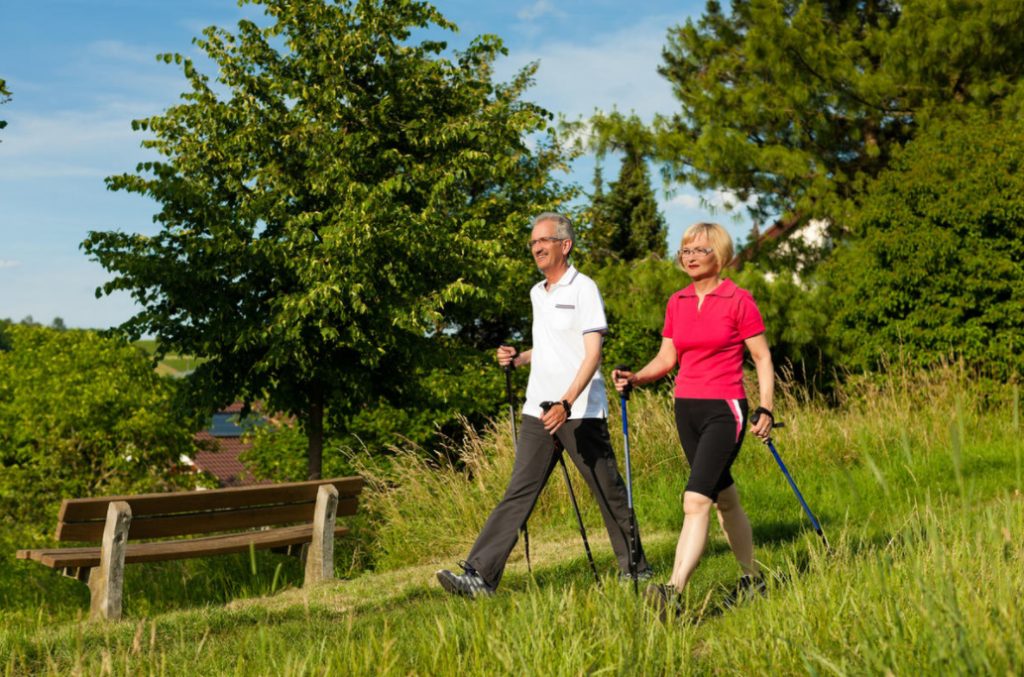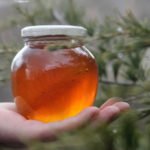Nordic walking is called fitness for the lazy. It would seem that everything is simple, take two sticks and go. But is this really the case? In this article, we will talk about whether there are health benefits from Nordic walking, and how it should be done for this purpose.
Walking with a strange name
If we take into account that Finland does not officially belong to the Scandinavian countries, it turns out that “Scandinavian” walking does not really exist. At the same time, many people are actively engaged in it, and there are already many clubs and sections throughout the country where everyone is actively taught this technique. I was curious, and after searching through various sources, I found that walking with sticks is really called Finnish or Northern all over the world.
Walking with sticks was really born in Finland. In the 40s of the last century, the famous skier Juha Iisakki Mieto proposed to include “walking with ski poles, but without skis” in the training program in the summer to keep athletes in shape. As a result, those skiers who trained under the Mieto program showed much better results in the winter than their comrades who practiced as usual. This fact made Finnish scientists think, and for many years the mechanism of the effect of walking with sticks on the human body has been widely studied.

Dr. Tuomo Jantunen, head of the Finnish outdoor sports Association, made a great contribution to the popularization of this movement. At the official level, the presentation of a separate sport, called Nordic walking, took place in 1997 in the very center of Helsinki, where thousands of adherents of the movement demonstrated sticks in action. By that time, it was no longer used ski equipment, but a special one made by the sponsor company Exel.
Today, Finnish walking is one of the top 100 social innovations in Finland. The Wellness movement quickly spread around the world, but in our country, due to an error in translation, it took root under the more romantic name “Scandinavian walking”.
What is the use of walking with sticks?
Sports doctors are unanimous in their answer to this question: Scandinavian
walking is a type of cardio exercise. It differs from normal walking in that it exerts an equivalent load on the back, shoulders, arms and legs at the same time. With the right technique, up to 90% of the body’s muscles are active while walking.
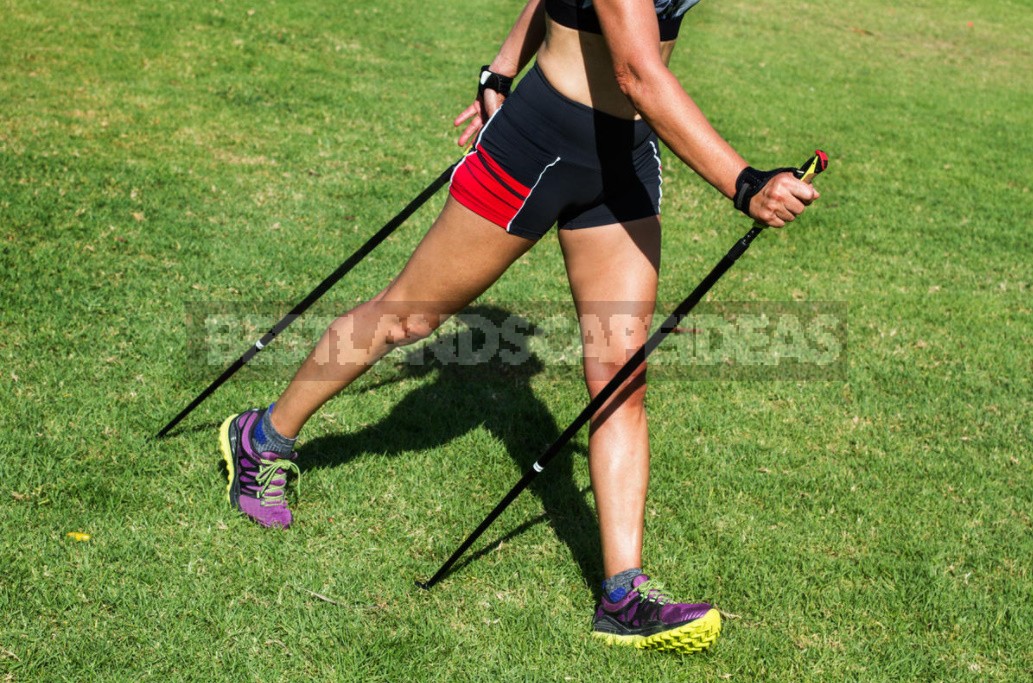
To date, 5 health benefits of Nordic walking have been proven.
- Improves blood circulation in the tissues by saturating them with oxygen.
- It has an anti-stress effect.
- Normalizes blood pressure as a result of strengthening the vascular walls.
- Strengthens the muscles of the back.
- Promote weight loss.
The main thing is to follow the rules!
Those who say that they were disappointed in Nordic walking because they did not notice any improvement in health after it, just made the most common mistake-they decided that walking with sticks does not require any training. This is a dangerous myth. For a health-improving effect, it is not enough just to walk, leaning on sticks. The weight of the body should be evenly distributed with the emphasis on the sticks, removing the load on the joints and ligaments. Therefore, it is recommended to start practicing this sport either with a textbook with pictures in front of your eyes, or using the services of a professional instructor who will “set the step”.
Rule # 1. Warm-up is mandatory
Before training in any sport, it is necessary to warm up, prepare the joints, ligaments and muscles for the future load.
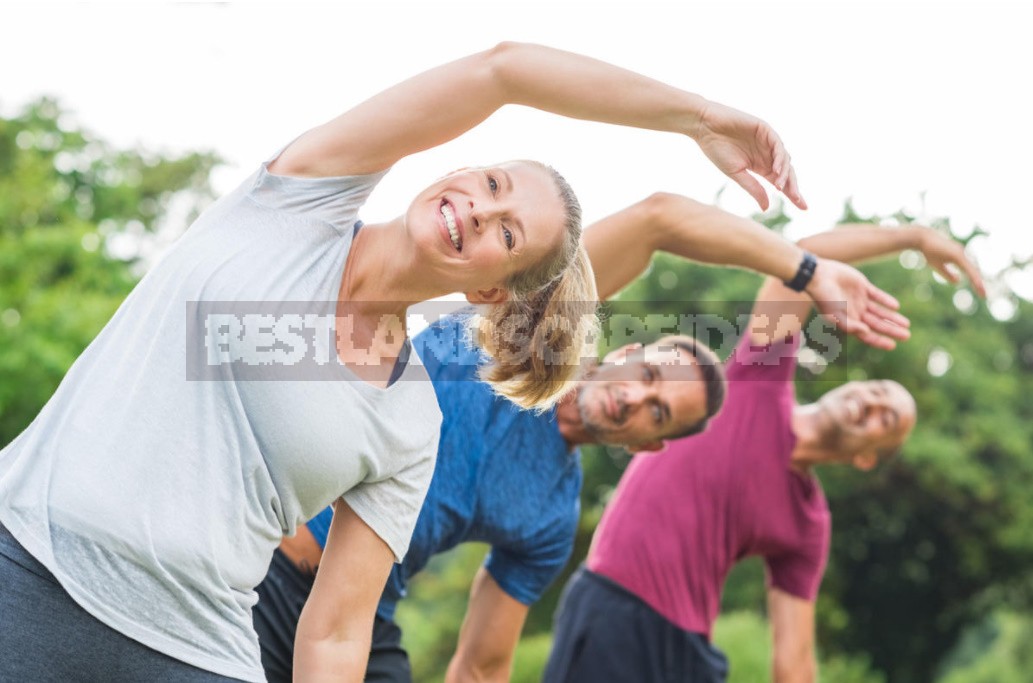
Therefore, before you joyfully walk into the light distance, you need to” warm up ” with 2-3 universal exercises that you usually use for morning exercises.
Rule # 2. Walking walking discord!
Pay close attention to your posture: your back is straight and your upper body is slightly tilted forward. When moving, the step alternates with a wave of the opposite hand (the left leg means the right hand, etc.), the Sticks should be held closer to the body, without spreading your arms very wide. Keep your back straight when walking. While one hand with the stick goes back, you push off and transfer your weight to the stick. When you pull your hand back, don’t forget to unclench your palm. At the same time, you should inhale air when walking with your nose, and exhale with your mouth.
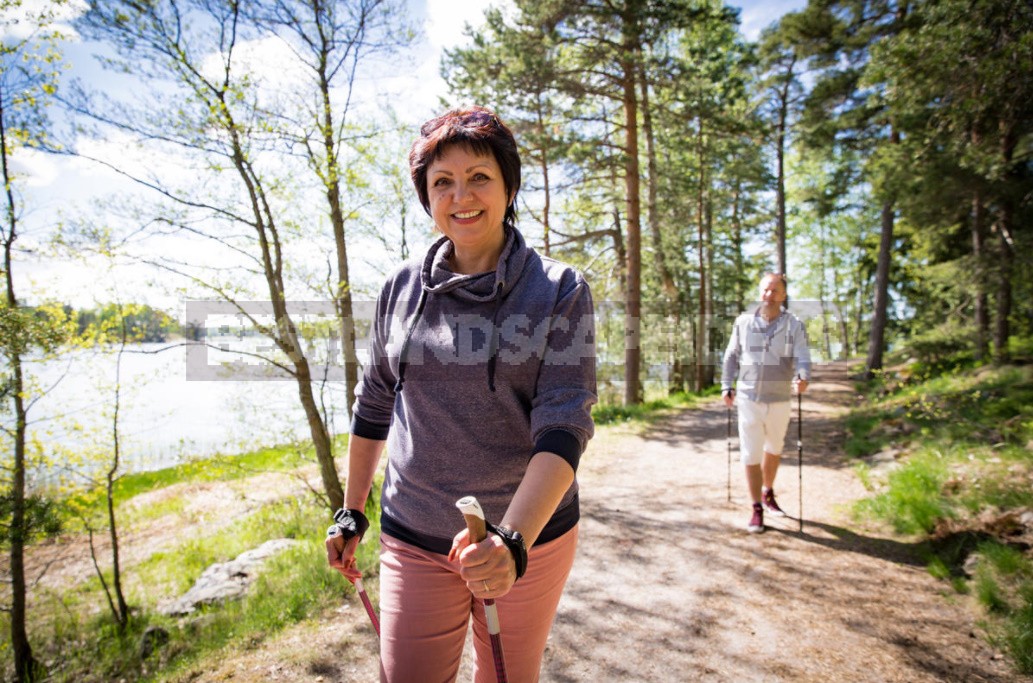
Rule # 3. At the end — a hitch
You can’t stop walking abruptly and do normal things (for example, get on a bike and go grocery shopping). After the end of the training session, there should be a hitch-in fact, this is the same warm-up that was performed at the beginning. Now its goal is to “calm” the working muscles, normalize breathing and heart rate.
Like most sports, Nordic walking requires a certain amount of equipment. It is affordable for people with different income levels and will last for many years.
Sticks
The most important attribute, without which walking is impossible. Their official name is Nordic Walker, and colloquially just “Nordics”. Sticks are divided into 2 types: monolithic with a certain length — and telescopic, which can be laid out.
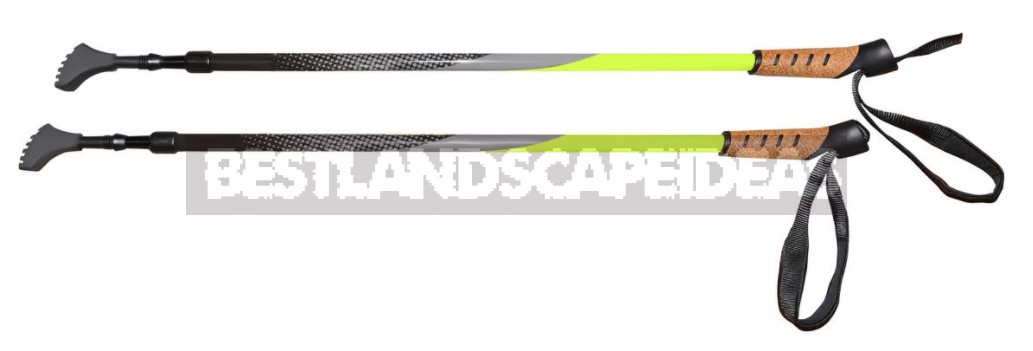
A mandatory indicator of the “correct stick” is the presence of a lanyard (a special attachment at the top that fixes the hand when walking). To select a stick by height, use a simple formula: multiply your height by 0.66-0.68 and round it up for convenience.
Tips for sticks
Another important component in the equipment of the “Walker” is a tip for a stick. There are three types of them. A standard sharp straight metal tip is called a spike or tooth. It is necessary for walking on snow, sand, grass and soft ground. Usually, a round retainer is used with it (as with ski poles, included in the kit), so that the poles do not fall through. (When walking on a hard surface, the circle-retainer is not needed — it must be removed so as not to interfere.)
The second type of tip is similar to a Shoe: it is made of rubber, smooth or with a shallow tread. It is considered ideal for beginners in “urban” walking — on the types of surfaces that are found in the city (on asphalt, paving slabs, etc.).
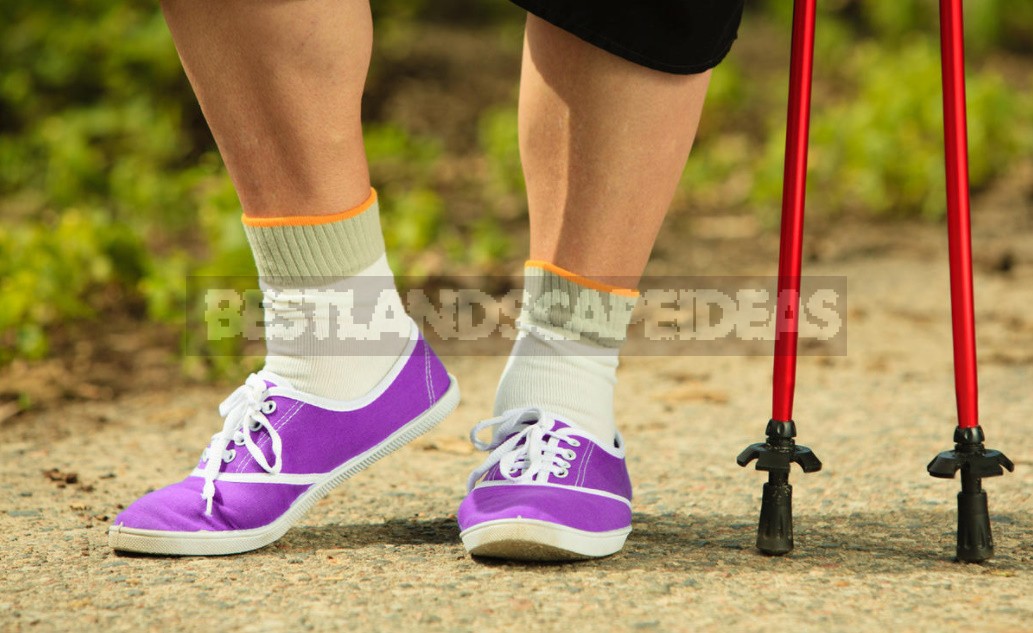
The third type of tip also resembles a Shoe, but it is wider, and its tread is much more prominent (sometimes with interspersed metal ground hooks, special shock-absorbing inserts inside the tread). Designed for walking on rough terrain (that’s around the dacha and in the nearest forest-the same!). However, this type of tip is more suitable for experienced walkers who already know how to confidently put a stick, measure the step.
Shoes and clothing
Can be any! The main requirement for it is convenience when walking. It is better to give preference to shoes with a backdrop and a fixing strap. If you have flat feet, it must have an orthopedic insole. Clothing should be appropriate to the season and weather, so that it is not hot or cold when walking in it. You should also give up accessories that can get tangled with a stick (long scarves, capes, ponchos, etc.). It is better to go for a walk light, but if necessary, you can take a small backpack that will fit a bottle of water or a thermos of tea and necessary personal belongings.
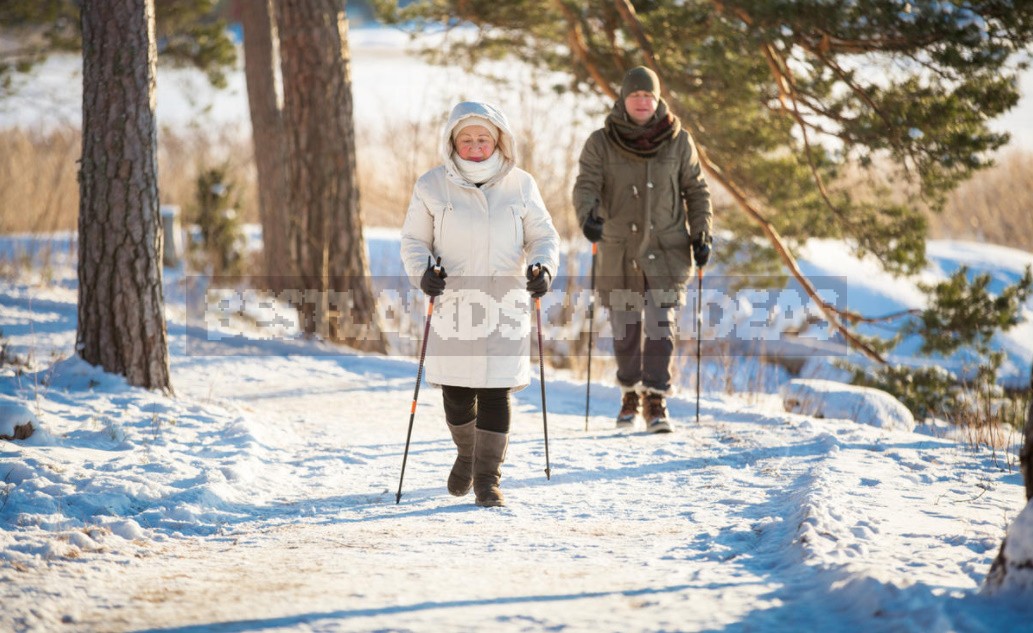
Contraindications for classes
Before you start “walking with sticks”, be sure to consult your doctor. Despite the fact that this democratic sport is advertised as “something that suits everyone”, there are a number of contraindications for it. These include all chronic diseases in the acute stage, a recent heart attack or stroke, heart rhythm disorders (including an installed pacemaker), post-surgery conditions, fever, pain of unknown cause, internal bleeding, and others.
